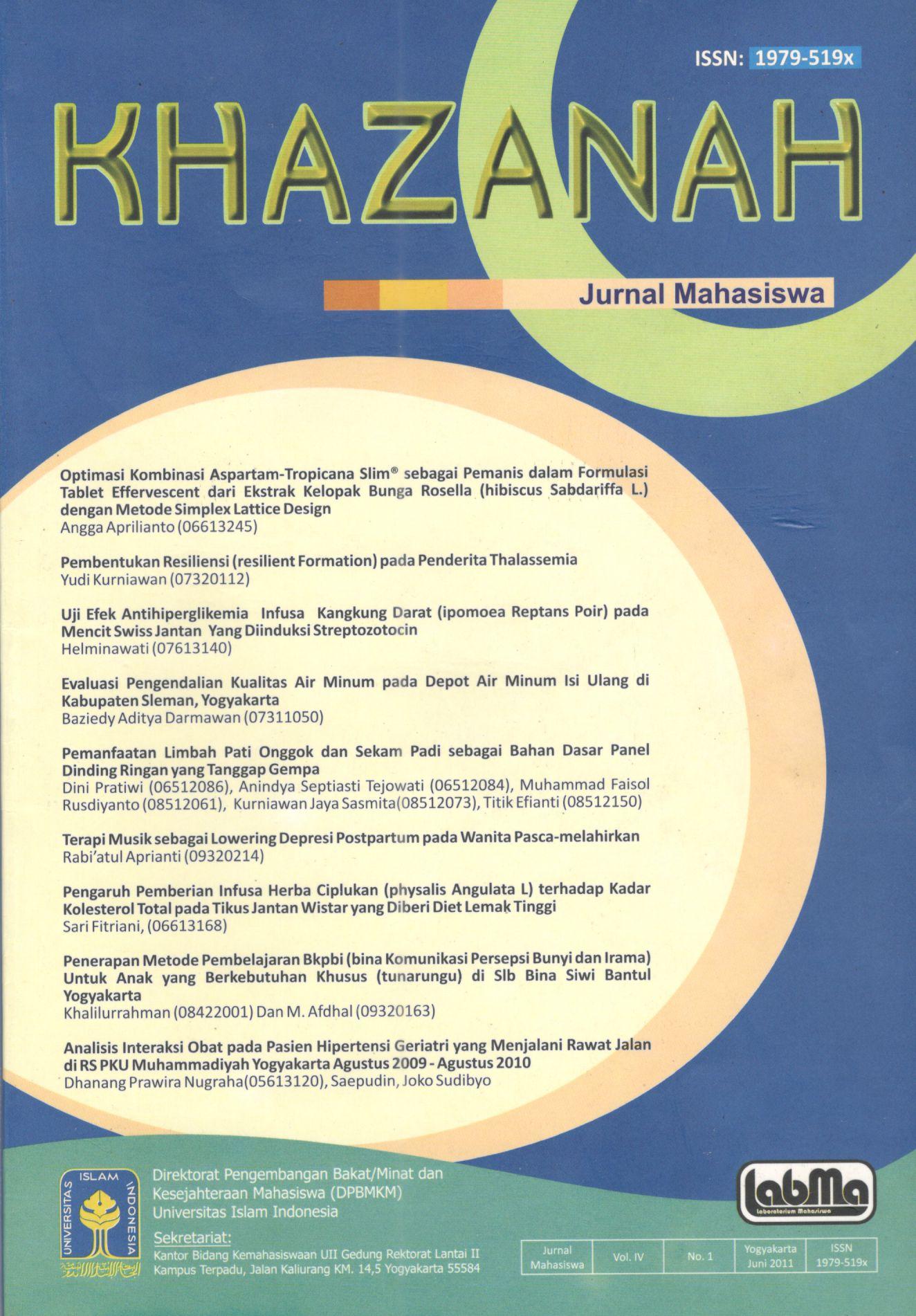Main Article Content
Abstract
One cause is shortage of housing in Indonesia is caused by the high, of construction to build a shelter and to minimize the high cost of construction is one of them is to use a cheaper alternative wall panel quality. In addition, Indonesia as a country that is vulnerable to earthquake shocks require earthquake response of buildings in order to anticipate the existence of damage and casual ties, In the article the results of this research, to create a lightweight wall panel including earthquake, the main material used is waste cassava starch and rice husk as filler and resin as matrix. The purpose of this article is to provide alternative building materials solution that responds to earthquake shocks so it can be recommended as a wall panel including earthquake. The method used in the process of research is puce research method in the laboratory while the analysis method is to use comparisons with the theories of reference. In the process of material research, done by finding the exact composition of resin, fiber starch, cassava and cassava pellets to obtain good mechanical characteristics. Results of laboratory tests showed that the composite panels on specific compositions have high mechanical characteristics.
Keywords: resins, waste cassava starch, rice husks, mechanical characteristics, earthquakeresponce.
Article Details
1. Proposed Policy for Journals That Offer Open Access
Authors who publish with this journal agree to the following terms:- Authors retain copyright and grant the journal right of first publication with the work simultaneously licensed under a Creative Commons Attribution License that allows others to share the work with an acknowledgement of the work's authorship and initial publication in this journal.
- Authors are able to enter into separate, additional contractual arrangements for the non-exclusive distribution of the journal's published version of the work (e.g., post it to an institutional repository or publish it in a book), with an acknowledgement of its initial publication in this journal.
- Authors are permitted and encouraged to post their work online (e.g., in institutional repositories or on their website) prior to and during the submission process, as it can lead to productive exchanges, as well as earlier and greater citation of published work (See The Effect of Open Access).
2. Proposed Policy for Journals That Offer Delayed Open Access
Authors who publish with this journal agree to the following terms:- Authors retain copyright and grant the journal right of first publication, with the work [SPECIFY PERIOD OF TIME] after publication simultaneously licensed under a Creative Commons Attribution License that allows others to share the work with an acknowledgement of the work's authorship and initial publication in this journal.
- Authors are able to enter into separate, additional contractual arrangements for the non-exclusive distribution of the journal's published version of the work (e.g., post it to an institutional repository or publish it in a book), with an acknowledgement of its initial publication in this journal.
- Authors are permitted and encouraged to post their work online (e.g., in institutional repositories or on their website) prior to and during the submission process, as it can lead to productive exchanges, as well as earlier and greater citation of published work (See The Effect of Open Access).
